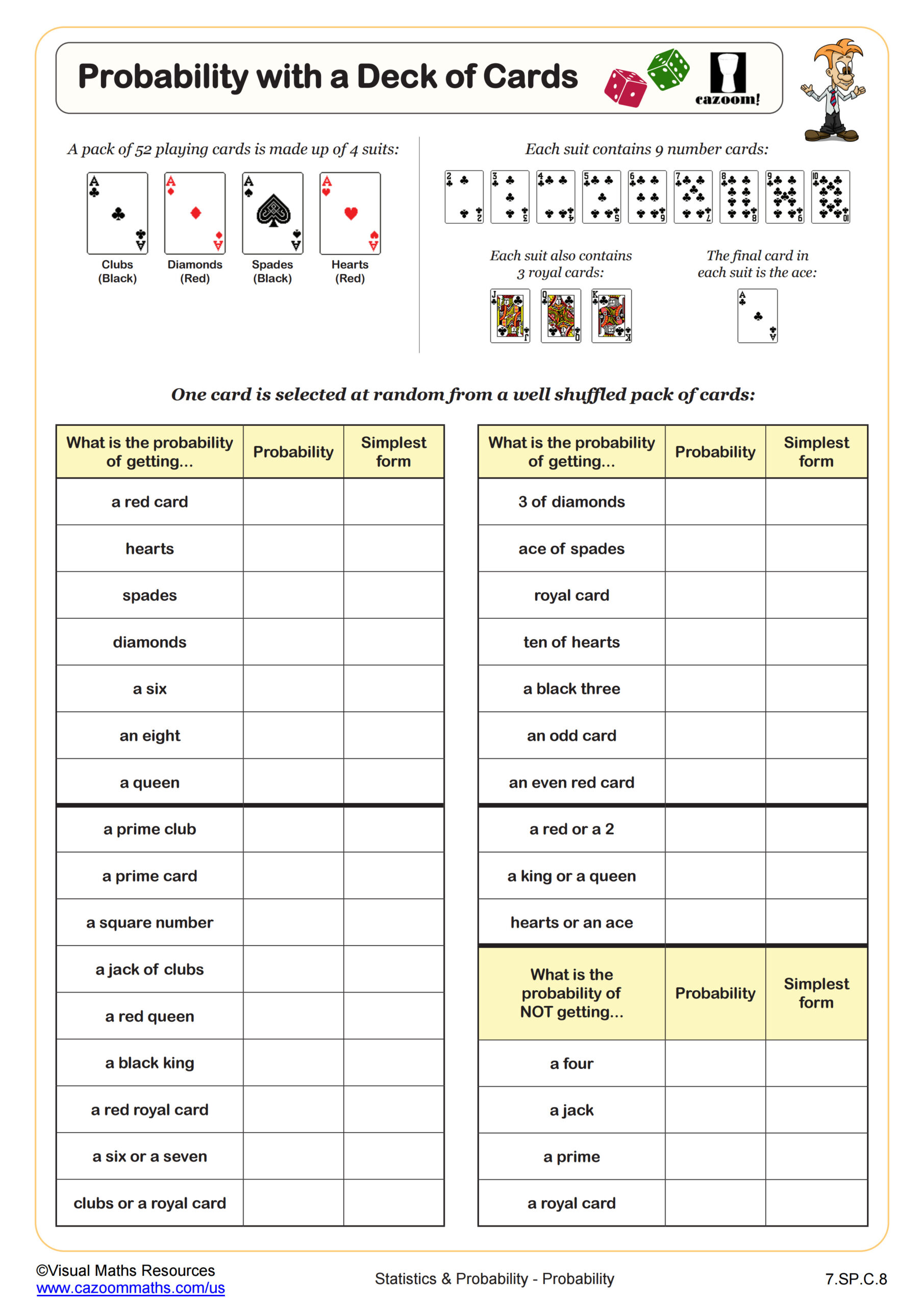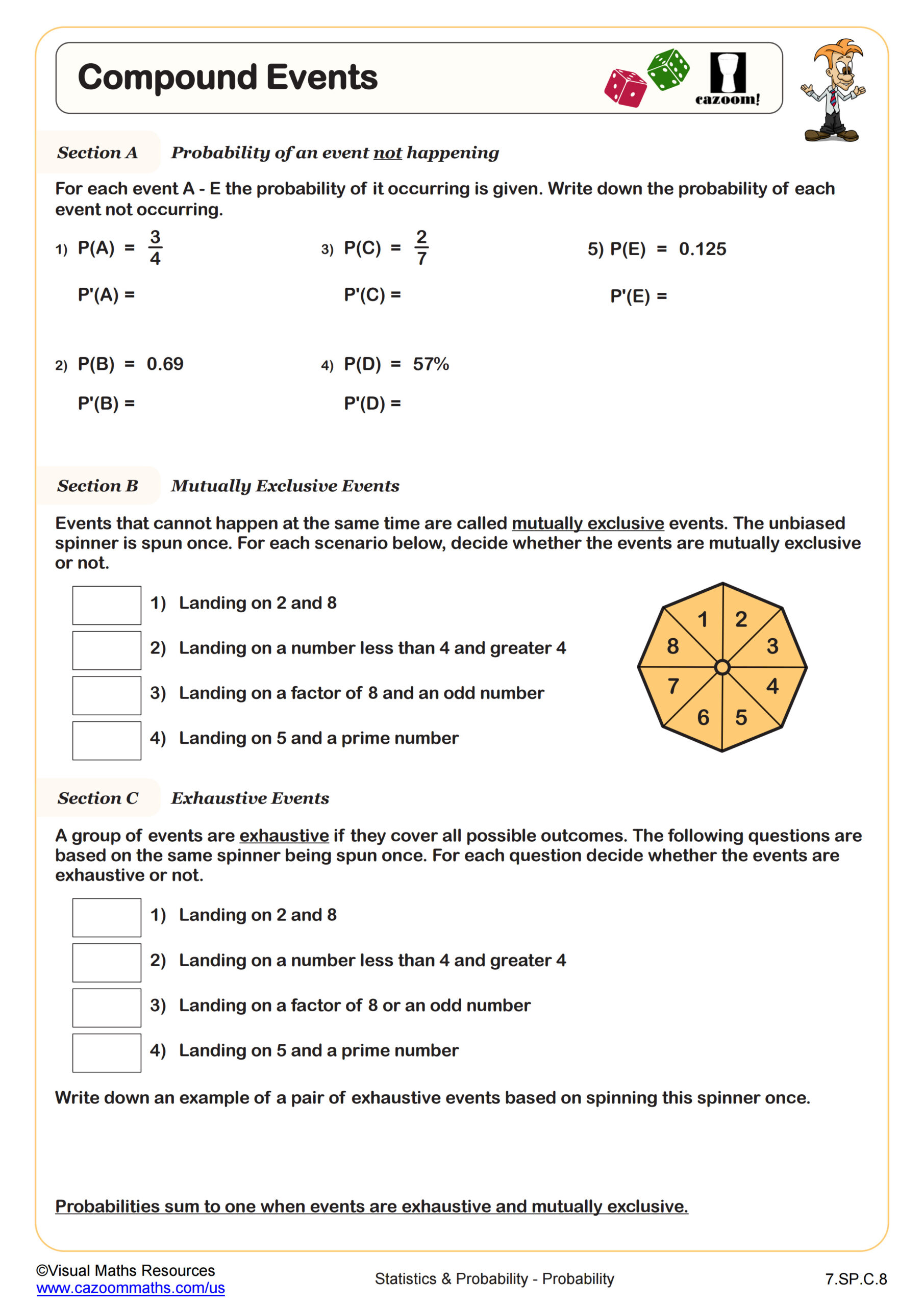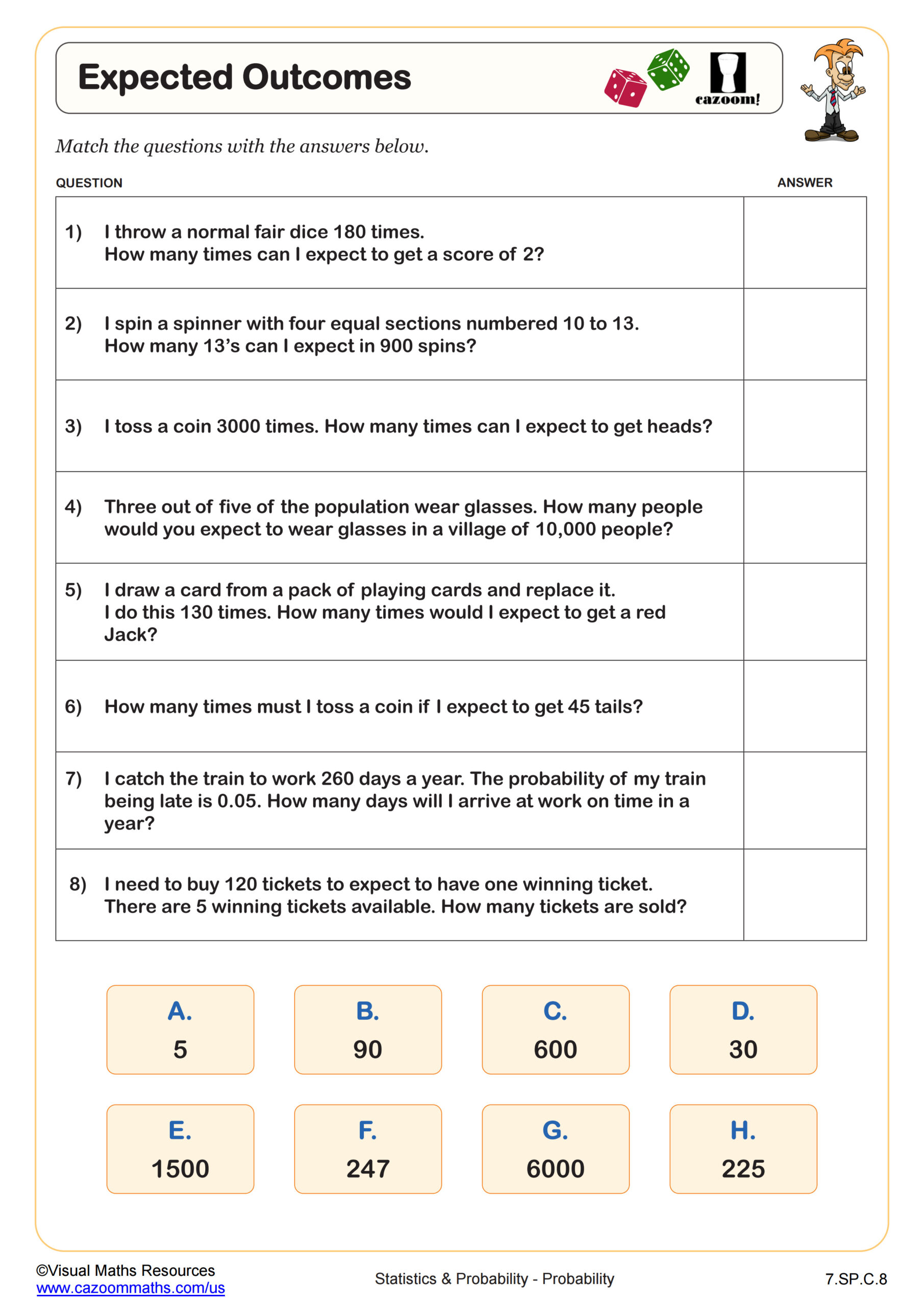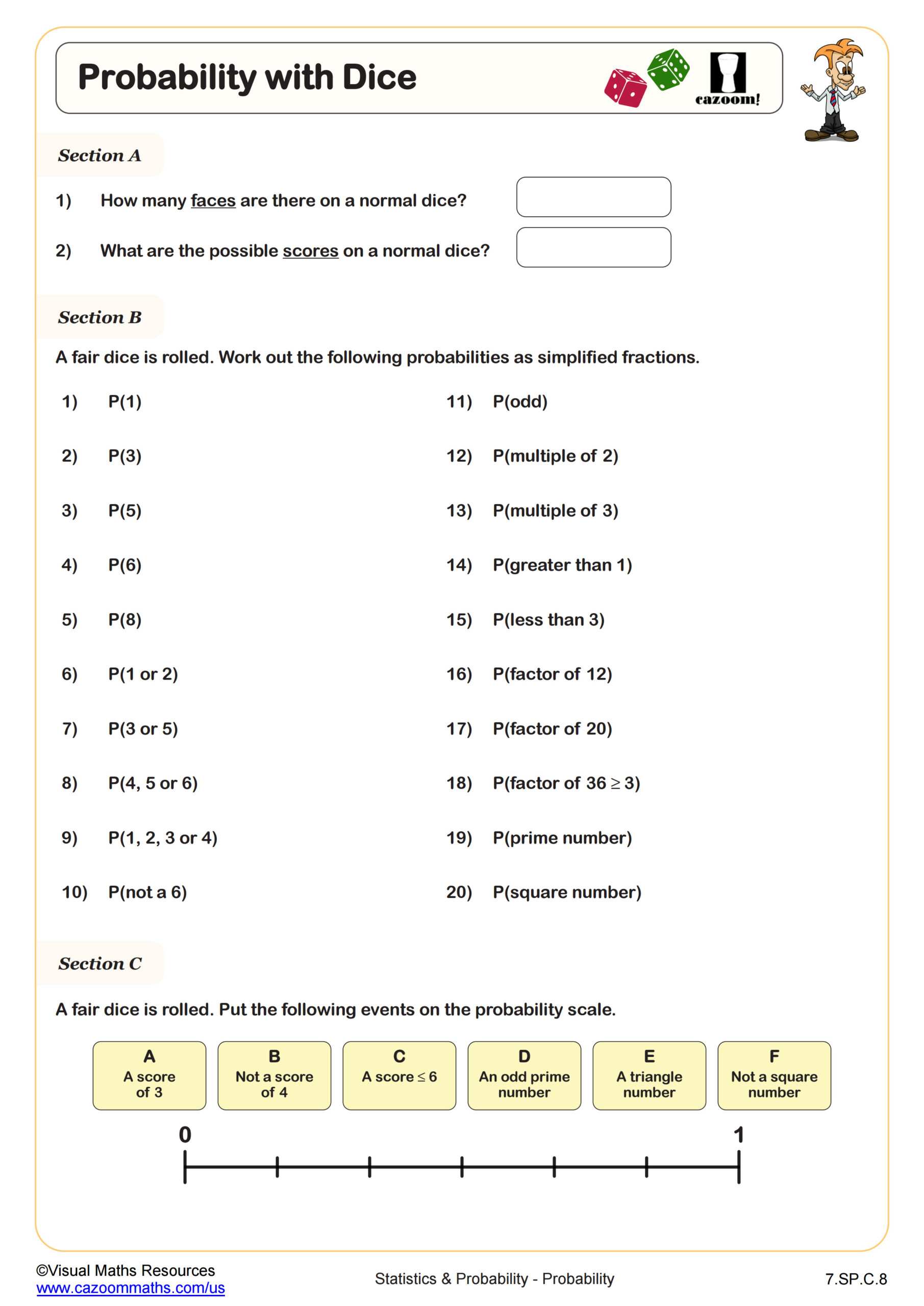Loading...
Back to:
Probability with a Deck of Cards WORKSHEET
Suitable for Grades: 7th Grade
CCSS: 7.SP.C.8
CCSS Description: Find probabilities of compound events using organized lists, tables, tree diagrams, and simulation. a. Understand that, just as with simple events, the probability of a compound event is the fraction of outcomes in the sample space for which the compound event occurs. b. Represent sample spaces for compound events using methods such as organized lists, tables and tree diagrams. For an event described in everyday language (e.g., “rolling double sixes”), identify the outcomes in the sample space which compose the event. c. Design and use a simulation to generate frequencies for compound events. For example, use random digits as a simulation tool to approximate the answer to the question: If 40% of donors have type A blood, what is the probability that it will take at least 4 donors to find one with type A blood?
Probability with a Deck of Cards WORKSHEET DESCRIPTION
This worksheet is based on the theme of a deck of playing cards (which is displayed at the top of the page for any students not familiar with suits, royal cards etc.) and students will list the probability of various outcomes when one card is pulled from the deck. Probabilities are to be written as fractions and simplified where possible.
Examples of outcomes listed include finding the probability of getting a red card, a prime club, the ten of hearts, hearts or an ace, and so on. We have also included a section that asks “What is the probability of NOT getting…”.




